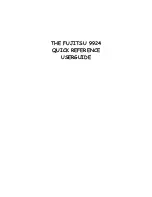
Spectralink 84-Series Series Wireless Telephones Administration Guide
1725-86984-000_P.docx
September 2016
280
○
TX Retry packet count & %
○
RX Retry packet count & %
Successful Handoff
○
Roam To AP MAC address
○
Roam To channel, Score, RSSI & Penalty
○
Roam From AP MAC address
○
Roam From channel, score, RSSI, Penalty & Reason code
○
Other AP (up to four total) MAC, channel, score, RSSI, penalty & reason code
○
TXPO (Tx power of old AP in dBm)
○
TXPN (TX power of new AP in dBm)
Failed Handoff
○
Roam TO AP MAC address
○
Roam To channel, score, RSSI, penalty & reason code
○
Previous AP MAC, channel, score, RSSI, penalty & original handoff reason code
This information can be used to evaluate how well the WLAN is supporting the 84-Series
handsets.
Low RSSI (too weak) will cause high retries, dropped frames, missed frames, poor audio and
poor roaming.
Web Info: Using Syslog on Spectralink handsets
For more information about syslog, see Technical Bulletin CS-14-20
: Syslog on
Spectralink Handsets
.
Managing the Phone’s Memory Resources
Spectralink handsets are designed to operate optimally in a variety of deployments and real-
world environments. Each new software release adds new features and capabilities that require
varying degrees of the handset
’s memory resources. To ensure your handsets and their
configured features operate smoothly, you will need to check that the handsets have adequate
available memory resources. If you are using a range of handset features - especially
customized or advanced features - you may need to manage handset memory resources. To
help you optimize your handset features and memory resources, Spectralink provides several
tools and troubleshooting tips.
Identifying Symptoms
When the handset memory resources start to run low, you may notice one or more of the
following symptoms:
















































